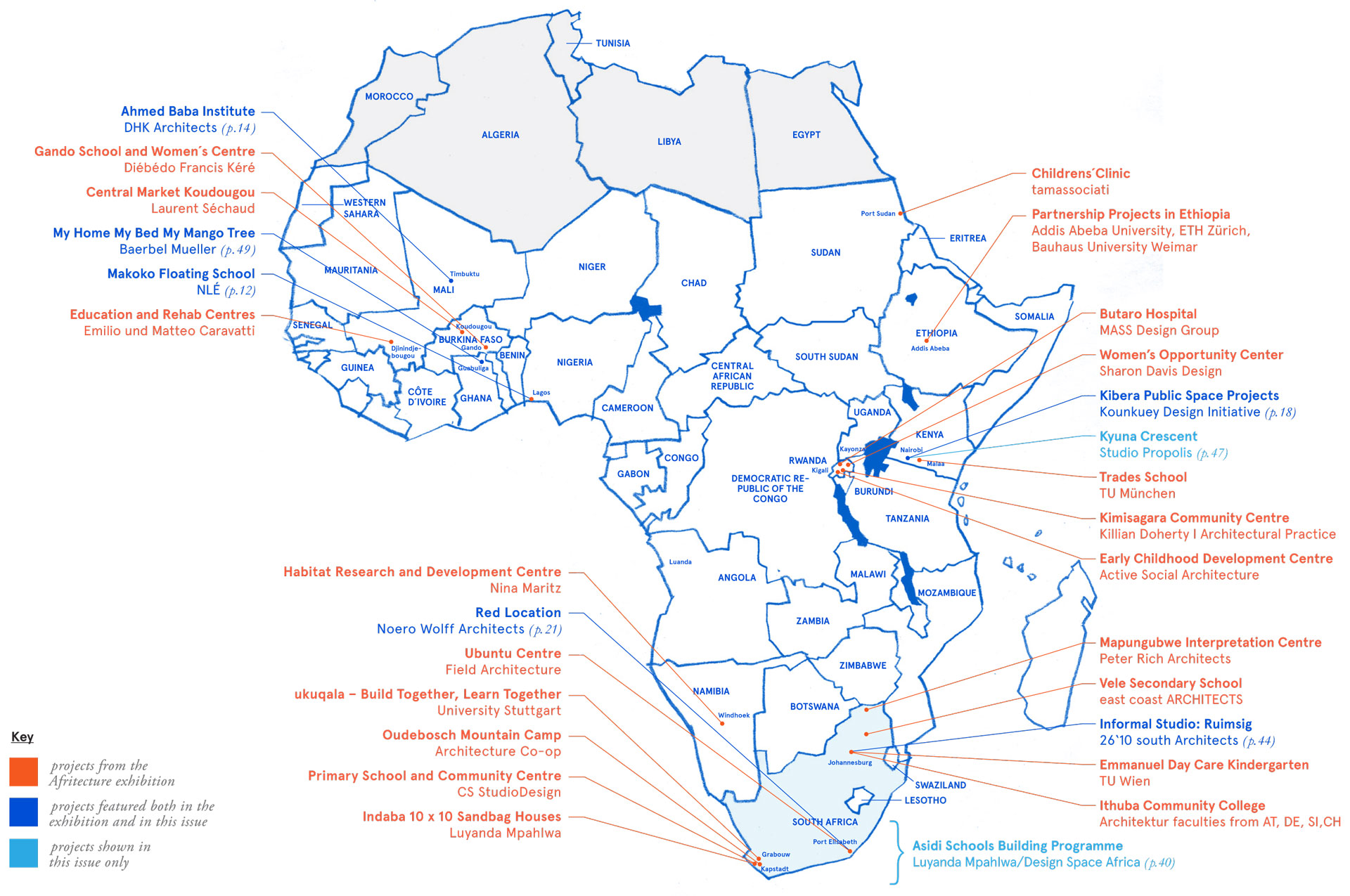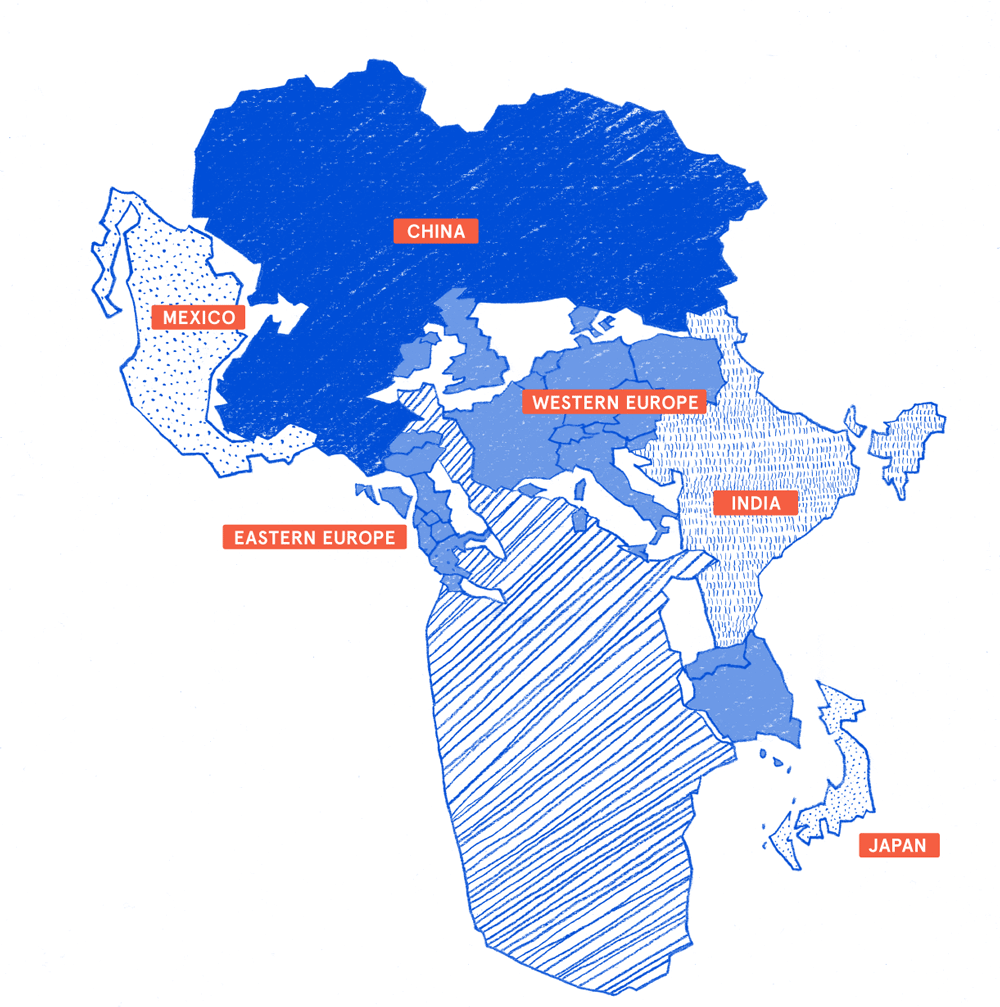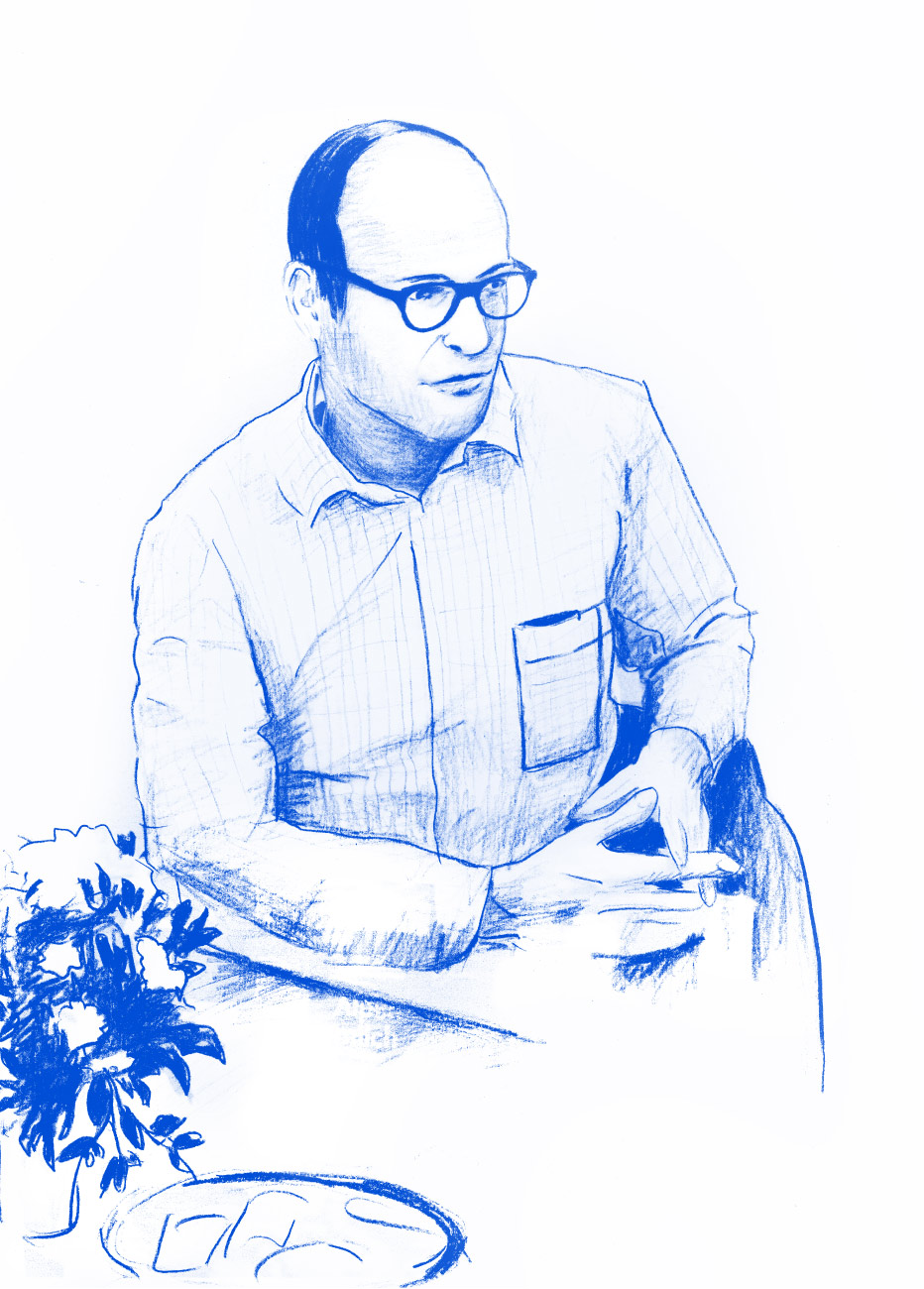-
What is
»AfRitecture«?Architecture curator Andres Lepik discusses the manifold issues raised by his exhibition in Munich
Interview by Florian Heilmeyer, Illustrations by Lena Giovanazzi
»We wanted to gather together examples of an architecture that we contend could be a model for a possible future in Africa.«
»Anyone who believes it’s possible to save the world with some well-designed toilets is naïve... But you also can’t allow yourself to become paralysed from shock, either.«
»An approach that focuses on social commitment is rare in architecture throughout the world.«
»We present an architecture that is consciously not aligned with typical commercial paradigms as seen in Dubai or Shanghai.«
-
The exhibition »Afritecture – Building Social Change« is Andres Lepik’s first endeavour as the new director of the Architecture Museum at TU Munich. It’s a bold move, given the title’s potential to stir up controversy. Couldn’t Afritecture sound a bit post-colonial, especially given the show’s context in a city that can easily be understood as a symbol of Western prosperity?
But Lepik’s selection of smart, small-scale projects from the Sub-Sahara and their sensitive presentation seems to justify the risk of ruffling feathers – particularly when it comes to the projects’ potential to serve as models for future initiatives the world over. We spoke to Lepik in Munich on the occasion of the show’s opening, curious about how he envisions its role. He met our concerns head-on. -

-
Exhibition view of “Afritecture”, in the background: Sammlung Brandhorst, Architect: Sauerbruch Hutton. (Photo: Esther Vlethsos courtesy Pinakotheken der Moderne)
-
Your exhibition showcases 26 projects from 10 African countries south of the Sahara. This is an area larger than the US, China or Europe – isn’t that stretching it a bit far? Aren’t these countries too diverse to gather together in a single exhibition?
Sub-Saharan Africa is an enormous territory with immense differences. The goal of “Afritecture – Building Social Change” is not to exhibit the current state of architecture in this entire region. It is rather a continuation of my involvement with socially-engaged architecture, which I examined in my exhibitions in New York in 2010 and in Frankfurt am Main in 2012. I included a few projects from Africa in these shows, and this time I wanted to focus entirely on Africa. But to state that I could give an overview of everything happening in this huge area would be presumptuous. Instead I felt like I was in a research ship travelling across the ocean, lowering a few probes to the ocean floor and removing some samples that I thought were important and interesting. Now we’ve put these samples up for public discussion.
What criteria did you use for selecting the projects?
We wanted to present projects that fulfill a social function, are built for a broad audience and have participatory strategies for local communities. Another important criterion was how vigorously the architects were personally involved in either the research and/or the concept, demonstrating a strong commitment to social responsibility. We were also concerned with how each project responded to local conditions: climate, topography, and materials, plus political, social and cultural parameters. It was not easy to find projects that met all these criteria – yet we would have had the same difficulty on other continents. A focus on social commitment is rare in architecture throughout the world.
As a result of these criteria, the viewer encounters extremely ambitious but relatively small projects. They prompt reflection, but ultimately one is left with a good, reassuring feeling. Together with the title “Afritecture” and given the enormous range of problems in Africa, does this give us a false impression?
Every exhibition is an assertion about the future, and our assertion is that these 26 projects have significance as models for a new understanding of architecture in Africa.
We present an architecture that is consciously not aligned with typical commercial paradigms of construction, as seen in Dubai or Shanghai, but which is developed through local or regional traditions and uses local materials and technologies to create something specific to its context.
-
For visitors to the exhibition and readers of the catalogue, however, it could remain difficult to understand the highly disparate local contexts of the projects.
We couldn’t represent and explain every project with all its details. I suppose each of these projects could have been an exhibition on its own. But we are not hiding the context.
I think our selection includes both the small-scale and the large-scale: there are local projects such as Bärbel Müller’s HIV orphanage on the edge of a village in Ghana, which only consists of a few buildings and is dedicated to a specific problem in that community, as well as projects that relate to a larger and mostly informal context, such as the Red Location District, the Floating School in Makoko or the Kibera Public Space Project in Nairobi. These aren’t megastructures or large-scale interventions, but they can have a huge impact on their surroundings.
Exhibitions can also have an impact. As curator, I naturally hope that we can have an impact on the discourse and on public opinion.
To enter the exhibition, visitors were asked to take their shoes off. (Photo: Esther Vlethsos courtesy Pinakotheken der Moderne)
-

Comparative Cartography: There is a considerable degree of immapancy – insufficient geographical knowledge – when it comes to understanding the scale in question when talking about Africa as a continent. It always helps to have a comparison for the sake of perspective.
-
ANDRES LEPIK is director of the Architecture Museum TU Munich and professor for architectural history and curatorial studies. He studied art history at the universities of Augsburg and Munich. From 1994 he was curator at Neue Nationalgalerie, Berlin and from 2007-2011 at the Architecture and Design Department for The Museum of Modern Art, New York, where he presented “Small Scale, Big Change. New Architectures of Social Engagement” in 2010 which was his first major exhibition dedicated to the topic of socially engaged architecture. After his Loeb-Fellowship at the GSD in Harvard in 2011 he followed this interest by the exhibition “Think Global, Build Social” in 2012 at the Deutsches Architekturmuseum in Frankfurt/Main and now by “Afritecture – Building Social Change”.
AFRITECTURE – BUILDING SOCIAL CHANGE
13th September 2013 – 2nd February 2014
Pinakothek der Moderne, Munich, Germany

We hope these projects will receive greater attention and appreciation in their own countries as a result of this exhibition.
It’s difficult to talk about all the issues in this exhibition without making blanket statements or over-generalisations. For me, the exhibition and the catalogue seem to imply categorical hope and optimism. I’m sceptical of that impression, because I don’t know enough about the context of each project or its effects. What about you? Are you optimistic?
In the face of the rapid, simultaneous developments in the cities of Asia, South America and Africa, anyone who believes it’s possible to save the world with some well-designed toilets or kindergartens is naïve. Alarmingly naïve.
And it’s just as misguided to believe that substantial change could be effected in three or five years. But you can’t allow yourself to become paralysed with shock either.
The reality in many parts of Africa does not give cause for optimism. The quantity and magnitude of poorly designed buildings can be devastating. We cannot persistently use the USA, Germany, or Japan as a reference – indeed, that is precisely what leads to these imported concepts that don’t work in the African context. The examples in this exhibition point to a possible future that could not only serve short-term political interests, but also tangibly improve the living conditions of many people.
In that fundamental sense, the themes and issues covered by the exhibition are no longer just African, but are of global importance – and of course we in Europe and North America should also ask ourselves what we can learn from these ideas and approaches. I’m optimistic.
-
Search
-
FIND PRODUCTS
PRODUCT GROUP
- Building Materials
- Building Panels
- Building technology
- Façade
- Fittings
- Heating, Cooling, Ventilation
- Interior
- Roof
- Sanitary facilities
MANUFACTURER
- 3A Composites
- Alape
- Armstrong
- Caparol
- Eternit
- FSB
- Gira
- Hagemeister
- JUNG
- Kaldewei
- Lamberts
- Leicht
- Solarlux
- Steininger Designers
- Stiebel Eltron
- Velux
- Warema
- Wilkhahn
-
Follow Us
Tumblr
New and existing Tumblr users can connect with uncube and share our visual diary.
»Less is a bore.«
Robert Venturi
Keyboard Shortcuts
- Supermenu
- Skip Articles
- Turn Pages
- Contents


